Contact us today:
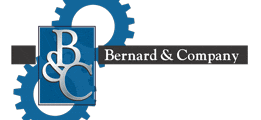
(847) 934-4500
tdaro@bernardandcompany.com

Contact us today:
(847) 934-4500
tdaro@bernardandcompany.com
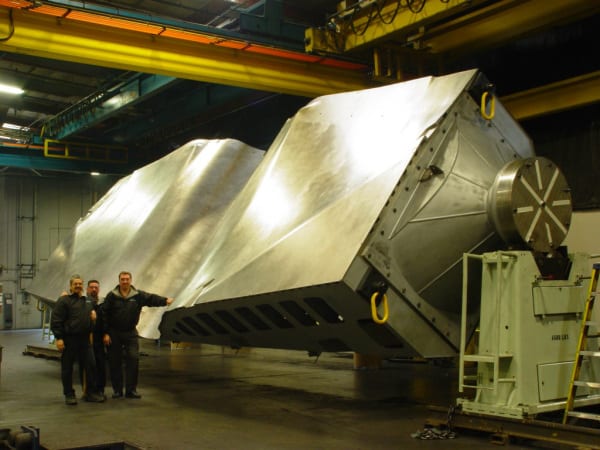
On the largest CNC mill at Coast, a German-built Handtmann five-axis machine that uses twin Siemens Sinumerik 840D numerical controls, the Siemens Volumetric Compensation System (VCS) acts in tandem with a proprietary temperature compensation system devised and implemented by Coast engineers. By combining these technologies with ongoing laser calibration, Coast achieves and maintains accuracies to +/- 0.003” on its longest runs. The Handtmann gantry mill can accommodate structures to 22’ wide x 75’ long x 84” high.
In operation, Siemens VCS factors all the machine kinematics of its various axes of motion, as well as pitch, yaw and roll, to precisely adjust the orientation of the tool tip to the workpiece. Simultaneously, the Coast temperature compensation system, developed over the company’s years in Invar tooling production for composite parts, further adjusts the machine’s accuracy to compensate the expansion of the machine and the workpiece for ambient temperature variations over a 24-hour period. While other companies in the industry typically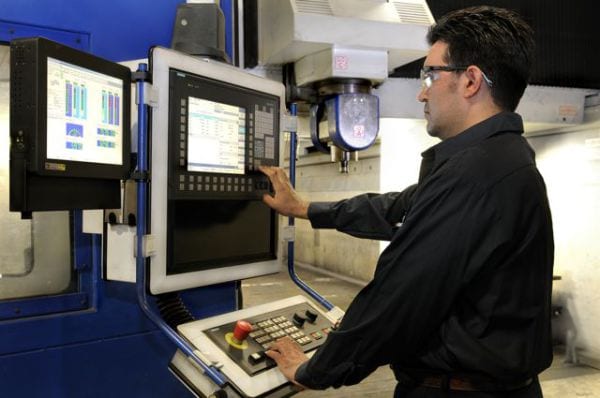
Invar tooling is the industry standard for composite lay-up, owing to its low coefficient of thermal expansion, but, as Coast President Paul Walsh explains, “While the material is a high nickel-iron alloy, which gives it great stability, the bottom line is you still get thermal growth over the long distance runs we process. The system we developed was the result of a lengthy analysis on all our long bed machine tools here.” Coast Composites runs the Handtmann mill at its Irvine facility, as well as Henri Liné five- and six-axis mills, plus SNK and Amura gantry and bridge mills. A 15-year-old Nicolas Correa five-axis gantry mill was recently retrofitted with a new Siemens CNC, motor and drives package, improving both its accuracy and speed, according to Walsh.
Coast Composites founder and current Director of Best Practices, Jerry Anthony, adds, “We knew the Siemens Volumetric Compensation System had substantial merit for our operation when it was first introduced to us, precisely because of the workpiece sizes we run and the corresponding thermal growth during machining, even on Invar tools. We had developed our temperature compensation system to adjust the go-to points from the control for real-time temperature on the machine and the workpiece. The data covered all aspects of our machining, from material composition to acceleration/deceleration mapping and the temperature variations over the largest pieces and longest machine cycles we had performed.” He notes that Coast 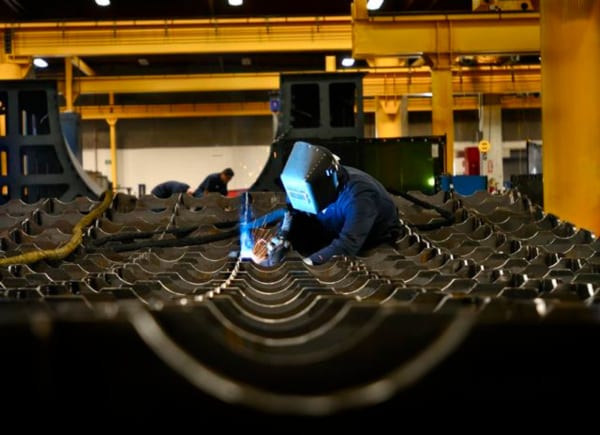
Expanding on the Coast Composites temperature compensation system, Anthony details the on-machine inspection of the workpiece and how the Siemens CNC is actually used to complete this process. “We have used laser tracking in tandem with our Valisys inspection software for some time now, having had a Siemens CNC engineer in Elk Grove Village, Illinois write the machine tool inspection interface software for us. In this way, we were and are now still able to use the power of the CNC to run real-time inspections and data analysis that have been extremely useful as an in-process inspection system for any tool manufactured by Coast.” He muses that the Coast system, “…essentially turns every machine tool here into its own CMM (coordinate measuring machine).” By developing this system at Coast Composites, Jerry Anthony concludes, the laser tracker is now used primarily for final checking, as the in-process monitoring produces what he suggests “…might be the highest accuracy machining standard in the aerospace industry.”
Walsh further comments on the evolution of composites in the commercial sector of the aerospace industry and at Coast. “Composites were only being used in non-critical applications but have now
On the massive Handtmann five-axis gantry mill, application engineering and training assistance were provided to Coast Composites by the machine tool builder’s local representative, Bryan Wilson of BD Technology, as well as personnel from the Siemens Aerospace Center of Competence.
Coast Composites is ISO 9001-2000 registered and AS-9100 Certified and holds numerous customer quality accreditations, including Boeing, Airbus, Northrop Grumman, Lockheed, Kawasaki, GKN and Mitsubishi, among others.
Coast Composites also builds tooling for the construction of such end products as satellite reflectors, used in the telecom and military markets.
HOW THIS MARRIAGE WORKS

In a typical long machining cycle on the very large parts produced at Coast, temperature variations in the workpiece material combine with the naturally occurring thermal expansion in the machine tool to create serious dimensional issues. This is true for whatever material is being run on the machine, even the Invar high nickel-iron alloy used extensively at Coast for producing composite lay-up tooling, fiber tape mandrels and other structures. While Invar has an extremely low coefficient of thermal expansion, the length of the machine cycle invariably (the word from which Invar got its name) results in sufficient thermal movement of the machine, which adversely affects the tool tip position.
In the Siemens VCS, the CNC compensates for 21 error factors of machine axes, pitch, yaw and roll. The true workpiece coordinates, rather than the programmed tool tip position, determine the actual cutting path. In conjunction with the highly advanced Siemens cutter path contouring, this compensation process results in a smoother finish on the part surface and a very high degree of machining accuracy.
In the Coast application, they have further enhanced this process by combining its proprietary temperature compensation system with the VCS inside the CNC to produce a highly accurate cutting path that takes into account the thermal expansion rates for the particular material being run as well as the machine itself.
The standard NC program assumes a 20ºC (68ºF) normal operating condition. This would be the norm for a CMM. The CNC incorporates the Coast temperature compensation system software, while the DNC runs the Valisys software, reading off the Renishaw touch probe data from the workpiece surface. Thus, the temperature compensation is within the machine control, resulting in real-time adjustments to the machine movement and an overall improved surface finish with superior accuracy, according to Anthony. “We have run enough material types and enough cycles to develop an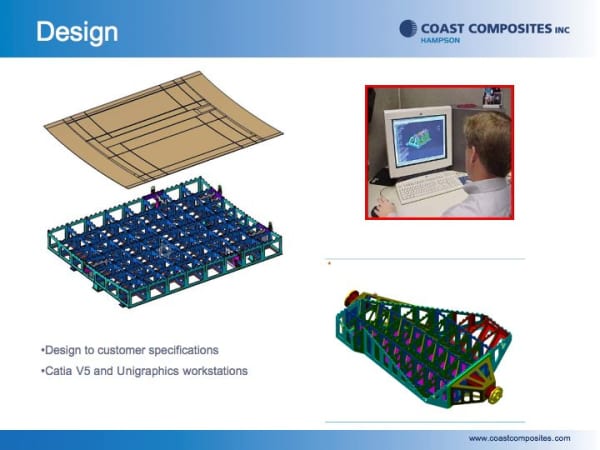
Siemens Aerospace Center of Competence engineers worked closely with the on-staff engineers at Coast Composites to consummate this marriage and, according to Anthony, the results have been beneficial for both parties.
“The relationship between the Siemens Aerospace Center of Competence and Coast Composites began seven years ago and has progressed to a true partnership, as the two companies have worked together consistently, merging advanced theoretical technologies with experiential knowledge. This has been and continues to be a very dynamic synergy between our companies. Siemens is proud to work with such a leader in the aerospace segment,” according to the Siemens account manager for Coast Composites.
For more information, please contact:
Coast Composites Inc. Tooling Division
Web: www.coastcomposites.com
Email: info@coastcomposites.com Attention: Jerry Anthony or Paul Walsh.
Siemens Industry, Inc. Drive Technologies — Motion Control (Machine Tool)
Aerospace Center of Competence Web: www.usa.siemens.com/cnc
Siemens Machine Tool Business
John Meyer
Manager, Marketing Communications
Siemens Industry, Inc.
(847) 640-1595
www.usa.siemens.com/cnc
SiemensMTBUMarCom.industry@siemens.com
Follow us on Facebook: www.facebook.com/SiemensCNC or Twitter: www.twitter.com/siemens_cnc_us.
—
Siemens Industry Sector is the world’s leading supplier of innovative and environmentally friendly products, solutions and services for industrial customers. With end-to-end automation technology and industrial software, solid vertical-market expertise, and technology-based services, the sector enhances its customers’ productivity, efficiency and flexibility. With a global workforce of more than 100,000 employees, the Industry Sector comprises the Industry Automation, Drive Technologies and Customer Services Divisions as well as the Metals Technologies Business Unit. For more information, visit http://www.usa.siemens.com/industry.
The Siemens Drive Technologies Division is the world’s leading supplier of products, systems, applications, solutions and services for the entire drive train, with electrical and mechanical components. Drive Technologies serves all vertical markets in the production and process industries as well as the infrastructure/energy segment. With its products and solutions, the division enables its customers to achieve productivity, energy efficiency and reliability. For more information, visit http://www.usa.siemens.com/drivetechnologies.
Continue reading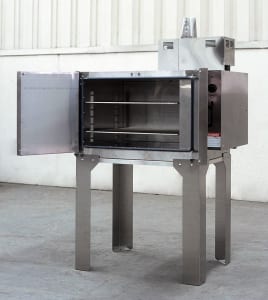
This Grieve bench oven features 2” insulated walls, leg support stand, Type 304, 2B finish stainless steel interior and exterior of brushed #4 stainless steel. Two oven shelves are also included.
Since flammable solvents are handled in No. 991, a powered forced exhauster with powered forced airflow safety switch to shut down heat if there is an exhauster failure, as well as a purge timer to allow the oven to exhaust four volumes of fresh air prior to turning on the heat source are all onboard.
For more information, please contact: THE GRIEVE CORPORATION, Web: www.grievecorp.com. Email: sales@grievecorp.com. Attention: Frank Calabrese.
Continue readingUsing Stotz air gages to validate spindle interface components, this leading supplier keeps quality on highest levels; every part, every time
Stotz USA, LLC, is a leader in air gaging technology, products and quality gaging system integration. According to company president, Chris Koehn, Stotz has achieved that goal by a variety of means, not the least of which has been the loyalty of good customers, who appreciate the value Stotz products brings to theirs. One of those customers is also a longtime friend of Koehn’s and he can say that with complete honesty, because he worked there, long ago.
Advanced Machine & Engineering (AME) of Rockford, Illinois is a world player in high-quality machine tool spindle interface components. As part of the Goellner, Inc. Group, AME enjoys a reputation throughout the machine tool industry for manufacturing the finest power drawbars, spindle shafts, guide bushings, locknuts, hydraulic sleeves, expansion gibs and more. AME components, through their own branded products and those of their brother companies such as OTT Jakob, Spieth and Tschudin & Heid, as well as their “other brother” Hennig, itself a world leader in chip conveyor and machine protection systems, are found on nearly every major machine tool brand.
AME was a customer of Stotz before Chris Koehn ever came to work at the air gaging company. Today, these two market leaders maintain a great working relationship, for all the right reasons. AME demands the highest level of quality in their machining and finishing departments and Stotz air gaging systems facilitate the accomplishment of that goal, every day, according to AME Service Manager, Greg Hobbs. “Air gaging is the only technology we’ve found that’s accurate enough to check the machine tooling and especially the spindle tapers we produce here. That’s a fact. In the past, we’d use hard gages and we still use them, but only for certain OD checks. We’d blue up the tapers, insert them, give them a good twist and do our inspections. Way too much inconsistency. Today, with sophisticated HSK tooling, this method is too hit or miss to be reliable. Air gaging provides dead stops on the test stand and the documentation is unbeatable for validation on the straightness, surface finish and taper angles. Plus, the Stotz system allows us to upload all the data on every part, so we have our favorite word…documentation…for every part we produce.”
Hobbs also commented on the user-friendliness of the Stotz air column. When the program is first input into the column for a part in the AME grinding department, for example, the Stotz column essentially becomes a PLC, providing hard data via the Ethernet connections to the host data base. In this manner, every parameter of every part is documented and recorded. In a classic example of the law of unintended consequences, this process is not only used on the parts run, it’s also used for calibrating the AME machines, in a predictive maintenance function.
At AME, various testing of machined spindle interface and other components is performed both at the machines in the grinding department, in a temperature-controlled 72° environment, plus in the company’s totally environment-controlled in-house testing department, supervised by the company’s Director of Quality, Brad Patterson. He confirmed Greg Hobbs’ observation that numerous other technologies have been investigated over the years for quality checking at AME and that air gaging has been found to be the best and most reliable for this company’s applications, particularly ID dimensions and configuration. Patterson also observed, “The sophistication of the Stotz air column is unmatched in the industry. We get all the data required and we get it in exactly the fashion needed to support our customers. Repeatable results and elimination of error, every time. Plus, the set-up is much faster than on our laser mics, which can’t be used for ID measurement.” Patterson further noted that the replacement of the bluing technique, one he termed a “black art,” with air gaging has brought and keeps AME up to the most current industry standards for quality evaluation.
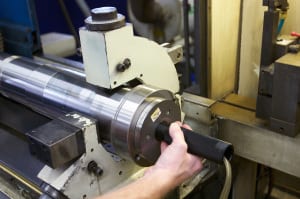
Typically, as AME’s Grinding Supervisor, Sam Schubert, explains, the finished product will rest for 24 hours of soaking, allowing the diameters to normalize. Though statistically predictable for most metal materials, thermal expansion can cause off-normal readings to occur. For checking certain bearing journals or spindle shafts, snap gages are set to accommodate size measurements down to the twenty millionths (0.000020”) range. The acceptable diameter tolerances for most AME products measured are in the 1-2 tenths (0.0001-0.0002”) range.
In cases where new masters are made for setting control values, those values are preset offline and programmed into the air column’s software, according to Greg Hobbs. Stotz typically performs this function for the customer in a remote manner over the Internet, through a proprietary IP address.
Among the many products finished in this grinding department are CAT/ISO 40 taper spindles, HSK test arbors, HSK grind quills, HSK steep taper milling tools and more. Often, older and worn spindle shafts are reverse engineered by AME for retrofits and reman’s. Even in these cases, air gaging is used to evaluate the finish process on the ID taper, as this versatile technology is easily adapted to such applications, according to AME personnel.
Sam Schubert expanded on the use of Stotz air gaging at AME.
“We have a full and very expensive inventory of hard gages with state-of-the-art indicators attached. But the air gages can do so much more. We use them for set-up on the grinding machines and they save us hours, every week. When you run the number of jobs we do here, that translates into substantial, additional work product and therefore more revenue for the company. In terms of reliability, some of the Stotz air gages we run here have been at AME since we began using the technology, nearly ten years ago now.” Schubert also noted the air gaging set-ups on the grinders dramatically reduce the time to first part in his department’s operation.
On one major spindle shaft project for an Asian machine tool builder, who was looking for a local source of supply in America, Schubert notes, AME was confronted with an unusually large quantity run, where tool degradation during the run would normally impact the production at some point. After an initial batch was produced, the machine builder claimed that everything but the taper was satisfactory. Quite surprised by this claim, AME checked all the documentation and determined that the customer’s test unit was actually out of spec, in a case where the error was repeated consistently and thus overlooked. In the end, the AME products were deemed better than perfect, in that instance.

As evidence of their commitment to this technology, Schubert notes that AME is now purchasing air gaging fixtures for all new customer applications. This quality spindle interface manufacturer aims to “keep breathing easy” in their process and product validation, as a result.
“Stotz has been a leader in gaging technology for almost 60 years. We are constantly striving to improve our designs and develop new products to solidify our position as a leader in measuring technology. The Stotz customer base consists of the top manufacturers and suppliers in the machine tool, automotive, aerospace and medical industries,” according to company president, Chris Koehn.
Harold Goellner, Vice President at AME, also contributed to this article.
For more information: STOTZ USA, LLC Email: chris@stotz-usa.com Attention: Chris Koehn, President
All photos kindly supplied by Bill Edmundson of Advanced Machine & Engineering
Release: STOTZ USA, LLC
Date: January 20, 2010
Continue reading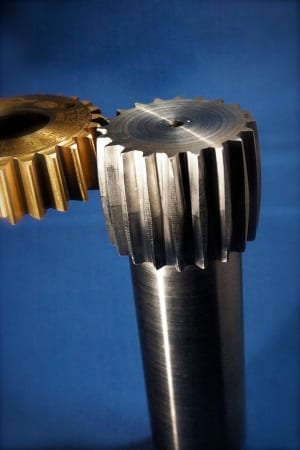
Some popular solutions to the noisy gear problem include enlarging the pinion to reduce undercut, using Phenolic, Delrin or other noise-absorbing products, where possible, or changing to a helical gear train. Other methods include tightening specifications to insure greater gear quality or redesigning the acoustical absorption characteristics of the gearbox. Occasionally, experimentation with gear ratios can limit harmonic frequency amplification, which otherwise can cause a gearbox to amplify noise like a finely tuned stereo system. The engineer can also study material and hardness requirements, so that modifications may be made to minimize heat treatment distortion or possibly eliminate the need for heat treatment entirely.
Particular attention must also be paid to gear geometry to insure maximum contact.
Another approach to the gear noise problem that yields good results is crowning or barreling of the teeth. This technique involves changing the chordal thickness of the tooth along its axis. This modification eliminates end bearing by offering a contact bearing in the center of the gear.
A second benefit of the crowning approach to gear cutting is the minimization of misalignment problems, caused by inaccurate machining of the casting, housing, shafting, gearboxes or bearing journals. Crowning can also reduce lead problems in the gears themselves, which causes the gears to wear unevenly and bind because of eccentricities and position errors. Obviously, a gear with a center contact is less affected by discrepant manufacturing or design; furthermore, one can reduce the backlash requirements and allow the gears to wear in rather than wear out.
Shaving is a secondary gear finishing operation done after rough hobbing or shaping to create the desired crown. Crown shaving has long been a popular method, especially in manufacturing coarse pitch gears. With the recent evolution of gear equipment capable of crowning while cutting, the need for shaving just to achieve a crown has been eliminated.
Two variations of the crown shaving method will produce a gear to compensate for off-lead or misalignment conditions.
One approach produces a crown by rocking the table during the reciprocation of work and cutter. The degree of crown is readily changed by this method. The other approach is plunge feeding, which requires dressing the shaving cutter to the desired crown. Generally, it is faster to plunge feed, but the technique can subject the cutter to greater wear. Of course, it is more difficult to change the crown, provided one starts with good quality gears. Shaving improves the quality of profile and reduces error in the gear tooth, through the cutting and burnishing action of the cutters.
The crown form can be produced on gear teeth in several other ways. One method is to shape the gear by use of a crown cam in the shaper back-off mechanism. The proper radius of the gear is calculated by using the amount of crown on the flank and the pressure angle of the gear. Unfortunately, the blocks, while not complex, tend to be expensive.
The advent of the latest generation of gear equipment has made two methods of crowning while hobbing popular. Both methods produce crowns by increasing and decreasing the center distance of cutter to workpiece. The first method utilizes physical copying of a template by a hydrocopying or mechanical following device. This allows taper hobbing or even the creation of sinusoidal wave forms, if desired. More recently, the second method, CNC hobbing, has become commonplace.
Depending on software limitations, CNC allows cutting gears in almost any desired form. A disadvantage to this approach is the high cost of the equipment, though the payback has decreased considerably, in recent years.
New CNC shapers can cut a crown gear or spline without the need for buying a special crowning cam. On our Gleason Pfauter P 300 ES, for example, we can crown by cutting a slight right and left hand helix angle along the face width of the part. This leaves the root diameter straight. We also have a Bourn & Koch Fellows MS 450 with a U-axis for controlling the back-off. It can be programmed to move the cutter spindle in and out during the stroking cycle to crown the tooth by cutting deeper at the ends of the face width and more shallow at the high point of the crown.
Who is using this gear cutting technology today?
Users of heavily loaded gears have been using crowning for quite some time. Another area ripe for the use of crowning is in the manufacturer of hydraulic wobble motors. Here, the application is strictly for misalignment problems rather than for noise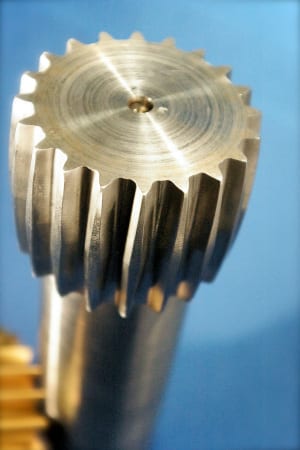
Prime candidates for use of the crowning technique are the small fractional horsepower motor manufacturers or anyone dealing with spur or helical pinions that are susceptible to noise or misalignment. Because crowning on foreign gear hobbing equipment has been available for a greater length of time, this method has been developed to a greater extent in Europe.
American manufacturers would be wise to take advantage of the availability of this kind of technology. Exploration of crowning as a solution to noise and misalignment problems can produce a real competitive advantage for gear manufacturers and users alike.
Fred Young, CEO Forest City Gear Roscoe, Illinois
For more information, please contact Fred Young at: Forest City Gear 11715 Main Street Roscoe, IL 61073 fyoung@forestcitygear.com 866-623-2168
AUTHOR-Fred Young is the owner and CEO of Forest City Gear Co. in Roscoe, Illinois. He has worked for the company since the mid-1950s and assumed its management in 1968. He is a graduate of Rockford College, where he studied physics, mathematics and English literature. Mr. Young is a leading authority on gear manufacturing.
Agency contact: Tim Daro Bernard & Company tdaro@bernardandcompany.com 847-934-4500
Editor note: Mr. Young is available for interviews on this or other gear design and manufacturing issues. Please contact agency to arrange. Also, any publication-generated leads from this article should be sent to Wendy Young at wyoung@forestcitygear.com. Thanks!
Continue reading
At both the AIST Iron & Steel Show and the Forge Fair, Advanced Machine & Engineering will be displaying their carbide circular sawing systems.
AMSAW® high-speed, production saw machines are specifically designed to use carbide blades to improve the cutting speed of ferrous and non-ferrous material, bars or billets, rails, profiles, pipes and tubes. Standard design features include:
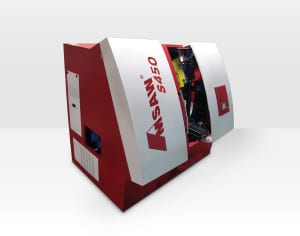
Also displayed will be various chip conveyors, safety devices and machine enclosures offered by AME and its sister division, Hennig.
Advanced Machine & Engineering Co., is a manufacturer located in Rockford, IL, serving the Machine Tool Industry with precision components and accessories, including spindle interface components, workholding devices, and, through our sister company, Hennig, machine enclosures, chip removal and filtration systems. The Fluid Power – Safety markets are served with cylinder rod locks and safety catcher devises; and the Production Saw market with our Amsaw carbide saw machines and Speedcut blade products. AME has manufacturing partners and customers around the world and across the U.S. To learn more, visit www.ame.com.
Hennig, Inc. design and produces custom machine protection and chip/coolant management products for state-of-the-art machine tools. Hennig products are designed to protect against corrosion, debris and common workplace contaminants. Manufacturing facilities located in the U.S., Germany, Brazil, India, Japan, China and South Korea. Repair centers are located in Machesney Park, IL; Chandler, OK; Livonia, MI; Blue Ash, OH; Mexico City, Mexico and Saltillo, Mexico. To learn more, visit www.hennigworldwide.com.
For more information, contact:
Tim Waterman
ADVANCED MACHINE & ENGINEERING CO.
2500 Latham St.
Rockford, IL 61103
Phone: 815-316-5277
Fax: 815-962-6483
E-mail: info@ame.com
Connect with AME online:
The SCHÖMA machine factory opted for a cycle turning machine with Sinumerik 840D solution line CNC for the manufacturing of individual parts and small batches of locomotive wheels; this machine also features Siemens ShopTurn with Manual Machine function. This hardware and software solution combines the flexibility and benefits of conventional machining with the productivity and efficiency of a CNC and this is what tipped the balance in its favor for one customer.
Christoph Schöttler Maschinenfabrik GmbH (SCHÖMA) is based in Diepholz, Germany. The company specializes in the development and production of diesel-engine locomotives. The model range includes tunnel and shunting locomotives; service, field and narrow-gauge locomotives; handcars, passenger carriages and gang cars. Around 90 percent of the locomotives produced each year at SCHÖMA are destined for use in tunnel construction.
Each construction project brings its own specific requirements and each country through which the locomotives travel has different environmental and safety legislation. SCHÖMA uses a modular system to meet a diverse range of customer requirements and the resulting need for a variety of equipment and product versions. One of the tasks facing the company is working out how to equip the locomotives for transportation by rail on differing track widths. Another requirement is locomotives with driving wheels featuring diameters between 600 mm and 900 mm, depending on local track usage.
Faced with even more demanding requirements in terms of production capacity and flexibility, SCHÖMA’s Managing Director, Christoph Schöttler, last year decided to add a cycle-control Seiger Record LC 1400 lathe to his inventory of machines. “We opted for a head turning machine, as we do not need a tailstock to produce driving wheels, axle bearing housings and gear wheels. It is working just as we envisioned, so we obviously made the right decision,” says Schöttler.
SCHÖMA constructs around 120 locomotives each year, which equates to 480 wheels. In addition, there are also repair orders, which increase the workload to between 560 and 600 driving wheels per year. These wheels are produced in two mountings from forged blanks on the cycle turning machine. The first mounting is used to machine the wheel flange on the reverse side and the wheel hub. The shaft locating bore is pre-turned. In the second mounting, the first task is to pre-turn the driving wheel profile, then the rolling circle level and the wheel shaft locating bore are finished.
Careful approach
The cycle turning machine is controlled by a Siemens Sinumerik 840D sl CNC, equipped with the ShopTurn software package with Manual Machine feature. If required, ShopTurn programming can be performed on a separate PC as part of an operator’s work planning, without interrupting the work sequences on the machine. The programs are routed to the machine via the network, where they are called up as required, depending on the workpieces to be produced. The Sinumerik CNC is used for both numerically controlled machining and manual operation with the ShopTurn’s Manual Machine functions. In manual mode with electronic handwheels, the machine behaves just like a conventional lathe with an actual value display.
During face and longitudinal turning, the process operates with the entered feed and spindle speed. The real highlight of the system is that every cycle can be used straightaway, without having to create a custom program. At SCHÖMA, the option for manual intervention is used for setting the zero point or for simple contours. Diameters are determined manually, if driving wheels have been newly profiled or if driving wheel profiles require resurfacing. The wheel profiles abrade as a result of the high loads experienced in heavy-duty operation or on poor-quality tracks or as a result of the driven wheels skidding.
“With a machine that uses only CNC, it is difficult to rework the driving wheels, as it is not possible to determine how much material needs to be removed. With this optional manual mode, however, users can adopt a careful approach. This sums up the ease of control,” explains Walter Horstmann, head of mechanical production and wheel set construction at SCHÖMA.
Siemens ShopTurn with Manual Machine for the job shop
After machine start-up, the basic MANUAL screen is immediately displayed and offers direct access to choosing machining options without having to create a parts program.
Machining procedures such as “taper turning” and “straight line face and longitudinal turning” can be executed immediately. The operator simply selects tool, feed speed, spindle speed and orientation, plus, if required, machining angle, then presses “Start”. The active direction is graphically displayed in the basic screen, using a compass rose symbol. All machining steps such as entry, thread grinding and drilling can also be started in manual mode.
For additional product information and inquirie, contact:
SIEMENS MACHINE TOOL BUSINESS
John Meyer
Manager, Marketing Communications
Siemens Industry, Inc.
(847) 640-1595
www.usa.siemens.com/cnc
SiemensMTBUMarCom.industry@siemens.com
Follow us on Facebook: www.facebook.com/SiemensCNC or Twitter: www.twitter.com/siemens_cnc_us.
—
Siemens Industry Sector is the world’s leading supplier of innovative and environmentally friendly products, solutions and services for industrial customers. With end-to-end automation technology and industrial software, solid vertical-market expertise, and technology-based services, the sector enhances its customers’ productivity, efficiency and flexibility. With a global workforce of more than 100,000 employees, the Industry Sector comprises the Industry Automation, Drive Technologies and Customer Services Divisions as well as the Metals Technologies Business Unit. For more information, visit http://www.usa.siemens.com/industry.
The Siemens Drive Technologies Division is the world’s leading supplier of products, systems, applications, solutions and services for the entire drive train, with electrical and mechanical components. Drive Technologies serves all vertical markets in the production and process industries as well as the infrastructure/energy segment. With its products and solutions, the division enables its customers to achieve productivity, energy efficiency and reliability. For more information, visit http://www.usa.siemens.com/drivetechnologies.
Continue readingHAN-KWANG INTRODUCES THREE NEW LASERS
Korean giant enters U.S. market with big splash at recent FABTECH show
At the recent FABTECH show in Chicago, the largest builder of laser machines in Korea introduced three new CO2 lasers for metal fabrication, including two plate/sheetmetal machines and one tube/pipe cutter. Reaction from the attendees was very positive and interest quite high, as all three machines ran continuously throughout the show.
Details on the machines follow here:
Han-Kwang takes the next step in its technology development with the introduction of the Series PL laser system. Incorporating our unique Beam Radius Control (BRC) and Constant Beam Delivery System (CBDS), Series PL also features the newest Han-Kwang laser technology, our S5 High-Speed Cutting Head, which significantly increases the cutting speeds on all sheet metals, up to 1120 IPM for 20ga mild steel and 790 IPM for 16ga stainless. In addition, the practical machine design and highly functional, ergonomic controls make the Series PL the new benchmark in long gantry laser systems.
Features
• BRC-Beam Radius Control
Through optimizing the beam diameter for each different material and thickness, cut quality is greatly increased.
• CBDS-Constant Beam Delivery System
By keeping the entire length of the beam delivery constant over the work area, beam quality at the cutting focal point is enhanced.
• S5 High Speed Cutting Head
Adopting the new generation of the sensing board and the cutting head means cutting speeds for sheet metals such as mild steel, stainless and aluminum are dramatically increased.
• PMU-Plasma Monitoring Unit
Constantly monitors cut error such as plasma and restart with faster piercing and more stable cutting quality.
• LCS-Lens Crack Sensor
Built-in LCS monitors the status of lens contamination to give maintenance personnel instant alerts for replacement.
• Rotary axis for tube cutting
Cuts tubes up to 12” OD to give your operation substantial flexibility in work strategies
• Siemens SINUMERIK 840D with 15” touch screen
Use of the highest powered CNC, with open architecture and simplified set-up with plain language commands, plus full interface to your shop programming/monitoring network, means greater productivity at the machine and overall in your operation
• Onboard high-efficiency air filter & dehumidifier with monitoring window
Utilizing its own power supply, this unique Han-Kwang system guarantees contamination-free cutting and unmatched consistency.
—————————————————————–
Han-Kwang takes the next step in its technology development with the introduction of the Series PS laser system. Incorporating our unique Beam Radius Control (BRC) and Constant Beam Delivery System (CBDS), Series PS also features the newest Han-Kwang laser technology, our S5 High-Speed Cutting Head, which significantly increases the cutting speeds on all sheet metals, up to 1120 IPM for 20ga mild steel and 790 IPM for 16ga stainless. In addition, the practical machine design and highly functional, ergonomic controls make the Series PS the new benchmark in short gantry laser systems.
Features
• BRC-Beam Radius Control
Through optimizing the beam diameter for each different material and thickness, cut quality is greatly increased.
• CBDS-Constant Beam Delivery System
By keeping the entire length of the beam delivery constant over the work area, beam quality at the cutting focal point is enhanced.
• S5 High Speed Cutting Head
Adopting the new generation of the sensing board and the cutting head means cutting speeds for sheet metals such as mild steel, stainless and aluminum are dramatically increased.
• PMU-Plasma Monitoring Unit
Constantly monitors cut error such as plasma and restart with faster piercing and more stable cutting quality.
• LCS-Lens Crack Sensor
Built-in LCS monitors the status of lens contamination to give maintenance personnel instant alerts for replacement.
•Siemens SINUMERIK 840D with 15” touch screen
Use of the highest powered CNC, with open architecture and simplified set-up with plain language commands, plus full interface to your shop programming/monitoring network, means greater productivity at the machine and overall in your operation
• Onboard high-efficiency air filter & dehumidifier with monitoring window
Utilizing its own power supply, this unique Han-Kwang system guarantees contamination-free cutting and unmatched consistency.
—————————————————————–
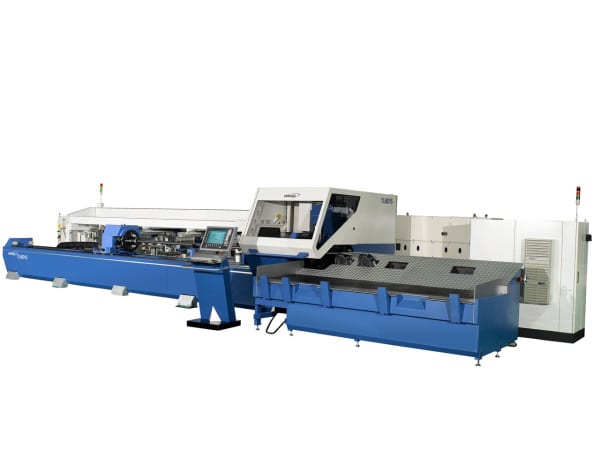
Highlight of the Series TL is our highly advanced S5 cutting head, which combines superior measurement and sensing mechanisms to change from signal size to pulse monitoring, resulting in optimum cutting conditions. This new cutting head design is further enhanced by Han-Kwang’s quick piercing nitrogen-injection technology. Smaller holes, quicker ambient area cooling and a substantial reduction in hole-to-hole cutting time will all benefit your production and your bottom line.
Features
• BRC-Beam Radius Control
• CBDS-Constant Beam Delivery System
• Magazine-fed bundle tube loading system
• Tube V-support system
• Rotary chucking system
• Completely enclosed safety workstation with automatic doors and light barrier system
• Panasonic 2500W resonator
• Cutting capability to 21’ long x 6” diameter
• Material thicknesses to 0.25” mild steel and 0.2” stainless
• Siemens SINUMERIK 840D, the highest-powered CNC on the market for maintaining complete processing cycle control by a single operator, using touchscreen and simple language commands
• ProDesign 3D CAD/CAM enabling fast adjustments to the production scheduling to yield maximum productivity from the system
• Unique Han-Kwang air filtration and dehumidifying system for cleaner cuts and more operator-friendly environment
For more information on this emerging new player in the laser machine market, please contact:
Robert Won, Director/North American Sales
HANKWANG USA, INC. Web: www.hankwang.com
Agency contact: Tim Daro Bernard & Company www.bernardandcompany.com
I had a speaking engagement today where I spoke about Social Media to a Human Resource association. I was discussing how Twitter, blogging and YouTube work best when they go hand-in-hand with each other. This topic came up here at work recently and this is how I put it into perspective:
When you develop a great video presentation and bring it to a trade-show or conference, you don’t just set it up on a table and leave it playing in a loop all by itself. You don’t just start the presentation and leave it unattended do you? Instead, you are there ready to greet people who show any interest in the presentation you are running. You are there to answer questions, make conversation and interact with others. As we all know, this is called networking. Likewise social media, when used correctly establishes this same type of interaction. Videos on YouTube need to be associated with a website, or a blog where someone interested can go and interact and ask questions. Once a connection is made and a conversation is started, it is just like you are standing together at the trade-show, or in the conference room. Here, in the discussion that evolves, whether it be virtual or in person, you will decide whether continuing a business relationship or not is in your best interest. So in both scenarios (virtual or in person) the same objective is being met.
Likewise, it’s important that once you post something on YouTube you have methods in place to draw traffic to the video. This is where your website, Facebook, Twitter and blog will play their part in this dance of getting your online presence noticed. Social Media needs to work together and be in harmony with each other. Working together is the key to the success of your social media campaign as well as your overall marketing plan.
We have a client who posts videos on YouTube, at the end of their Print Ads in the trade magazines we print: “see our videos on YouTube”… how is that for the evolution of the ad/PR world? We now have our traditional print ads referring potential clients (and anyone else who is interested) to our client’s online presence. At least for right now, it seems you can’t effectively have one without the other.
-Wendy
Continue reading
It is very common for us to hear “My son (or daughter) set up our Facebook page (twitter account, blog etc) but nothing ever came of it.” You cannot have an “if you build it, they will come” mentality when it comes to social media.
Your online presence needs to be built, given life and then it needs to be nurtured so it stays alive and grows bigger and stronger.
 Twitter or posting a blog once in a while. It’s not about someone who already has a full time job at your company spending a few minutes each week, “checking things out“. Here is the truth about social media: the beginning, the setting it up is actually the least time consuming and the easiest part. Why? because no one has found you yet and no one has started to communicate and interact with you yet. You are also not developing content, researching what’s being said and what are good, relevant things for you to be talking about. Getting content out into the world takes time. What are people interested in and talking about? How do you or your clients contribute to that conversation? This is not about selling products it is about participating in a conversation so you become the “go to” person for information and guidance in the world that your business is part of. I hear people say all the time, “what’s the big deal? I’ll just throw some things up on twitter once in a while and blog once in a while.” Sure, that is great if you want to use social media as an outlet for your daily ponderings… but if you want to get paying clients out of it, it’s a whole different ball-game.
Twitter or posting a blog once in a while. It’s not about someone who already has a full time job at your company spending a few minutes each week, “checking things out“. Here is the truth about social media: the beginning, the setting it up is actually the least time consuming and the easiest part. Why? because no one has found you yet and no one has started to communicate and interact with you yet. You are also not developing content, researching what’s being said and what are good, relevant things for you to be talking about. Getting content out into the world takes time. What are people interested in and talking about? How do you or your clients contribute to that conversation? This is not about selling products it is about participating in a conversation so you become the “go to” person for information and guidance in the world that your business is part of. I hear people say all the time, “what’s the big deal? I’ll just throw some things up on twitter once in a while and blog once in a while.” Sure, that is great if you want to use social media as an outlet for your daily ponderings… but if you want to get paying clients out of it, it’s a whole different ball-game. In the PR/ad world, we need to maintain this knowledge for our business to grow, but we also need to be a source and knowledge base for our clients so they can to look to us for expertise and guidance. How do we do this? We need to know about, speak about and write about anything and everything that is relevant to our world as well as theirs. We also need to know where our clients need to have a presence in order for social media to work for them. They look to us for knowledge and guidance and as their ad/PR agency; we better know what we are talking about.
In the PR/ad world, we need to maintain this knowledge for our business to grow, but we also need to be a source and knowledge base for our clients so they can to look to us for expertise and guidance. How do we do this? We need to know about, speak about and write about anything and everything that is relevant to our world as well as theirs. We also need to know where our clients need to have a presence in order for social media to work for them. They look to us for knowledge and guidance and as their ad/PR agency; we better know what we are talking about.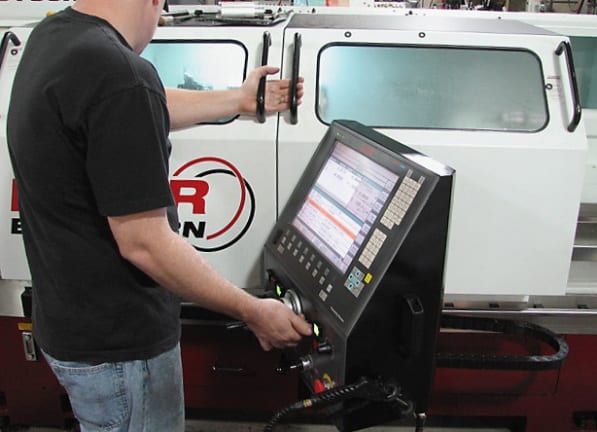
By definition, says Josh Johnson, vice-president, Continental Machine, Rockford, Illinois, his prototype and short-run production shop must constantly run lean. There can be no tolerating excessive programming, set-up or machining time of any kind, otherwise the shop loses and, in this economy, Johnson notes, that is simply unacceptable.
Continental Machine is a seven-person, 13,000 square-foot facility that houses a variety of CNC milling, turning, wire EDM, hole popping and grinding machines, as well as various sheetmetal and plastic injection molding machinery. Therefore, the shop is well positioned to produce a wide variety of metal and plastic prototypes used by its diverse customer base, which spans markets such as window hardware, bicycle components, automotive parts, chemical processing, medical devices and foodservice equipment. Materials processed here are just as wide-ranging, including aluminum, CRS, tool steels such as A2 and D2, zinc, brass, copper, bronze, titanium and a variety of engineered plastics such as glass-filled Delrin.
Recently, this job shop purchased a Fryer Easy Turn-21 CNC Combination Lathe, controlled by a Siemens SINUMERIK 840D sl numerical control. The two operators responsible for this machine upgrade at Continental had limited experience with CNC and none whatsoever with the Siemens protocol, as this was the first of its kind at the shop.
The Easy Turn-21 was particularly appealing to Josh Johnson, who comments, “The set-up is extremely easy. Teaching the tools, altering the lengths and diameters is kept very simple. After the initial learning curve, which took only a few days, the operators picked up on the conversational programming, right away. Also, one of the best features on the machine was that you could still turn the parts by using the electronic handwheel and just one function, such as hogging off material automatically or putting on a tapered thread.” He noted this feature was not only more comfortable for the operators, but it also allowed them to quickly and efficiently prove out part programs. Johnson commented that this would not have been possible on previous machines, owing to the flexibility of the control onboard the Fryer. The result has been a minimum 20% improvement in the overall cycle time on most part programs run at Continental. For this primarily prototype job shop, that fact translates into a substantial increase in the work product possible here.
Echoing this sentiment, Sue Ostrander, sales manager, Fryer Machine Systems, explained the process that led her company to select the SINUMERIK 840D sl numerical control for all its milling and turning machines, a move that was recently formalized by the company and announced to the trade.
“Since its inception 26 years ago, family-owned Fryer Machine Systems has based its operation on three core principles: build a quality product, price it fairly and provide quality service. This philosophy has allowed Fryer’s business to grow even in challenging times,” she said.
Fryer manufactures a diverse line of over 50 models of high-quality CNC machine tools in its 50,000 square-foot facility in Patterson, New York. Over the years, Fryer has become well-respected for its quality and innovation, throughout the job shop and production machining market segments.
“Moving to the Siemens 840D sl platform was the next step in Fryer’s ongoing commitment to provide our customers with the most innovative machine tools available in the market today,” Ostrander continued. “The Siemens solution allows machine tool end-users to achieve higher productivity through easy and intuitive features and step-by-step, on-screen programming. This enables them to dramatically reduce set-up, programming, and tooling times, while significantly increasing output.”
“The SINUMERIK 840D sl modular design allows us to take full advantage of the superior mechanical features in our machines,” continued Larry Fryer, president and CEO, Fryer Machine Systems. “Fryer has always been known for our easy conversational controls and the move to Siemens has allowed us to greatly enhance this feature,” Fryer noted. “The 840D sl menu-driven system combines an advanced geometry calculator that displays the part while the operator is programming it. Sophisticated solid model graphics allow the operator to verify the part program with more clarity than ever before,” he said.
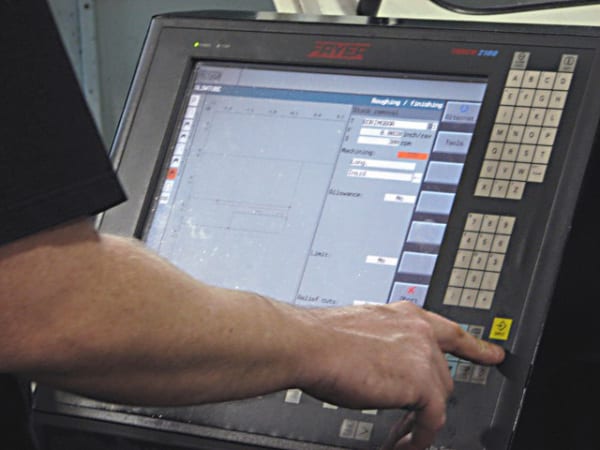
Fryer further stated, “Siemens provides us with a highly flexible solution that is critical to our ability to meet the specific needs of each customer. Our enhanced capability to offer the same control for both turning and milling gives Fryer machines a unified platform that is very important to customers both in the short-term and for long range expansion. Coupled with Siemens quality and reliability, they are invaluable to us in competing in today’s aggressive marketplace.”
Johnson added this comment on the service and training received by his operators at Continental. “Siemens has been helpful and very thorough in their training and after-sale service. The ShopTurn program, being integral to the control, now enables us to accurately determine tool path, potential collisions, tool changes and real world run time. This makes our operators’ jobs much easier, with the added benefit of allowing us to estimate much more accurately than ever.” Johnson further noted the CNC has substantial hard drive space, thus allowing most programs to be stored directly on the machine, though the company does maintain a back-up system.
For more information on this story, please contact:
CONTINENTAL MACHINE CO.
Email: conmach@onecommail.com
FRYER MACHINE SYSTEMS, INC.
Web: www.fryermachine.com
SIEMENS MACHINE TOOL BUSINESS
John Meyer
Manager, Marketing Communications
Siemens Industry, Inc.
(847) 640-1595
www.usa.siemens.com/cnc
SiemensMTBUMarCom.industry@siemens.com
Follow us on Facebook: www.facebook.com/SiemensCNC or Twitter: www.twitter.com/siemens_cnc_us.
—
Siemens Industry Sector is the world’s leading supplier of innovative and environmentally friendly products, solutions and services for industrial customers. With end-to-end automation technology and industrial software, solid vertical-market expertise, and technology-based services, the sector enhances its customers’ productivity, efficiency and flexibility. With a global workforce of more than 100,000 employees, the Industry Sector comprises the Industry Automation, Drive Technologies and Customer Services Divisions as well as the Metals Technologies Business Unit. For more information, visit http://www.usa.siemens.com/industry.
The Siemens Drive Technologies Division is the world’s leading supplier of products, systems, applications, solutions and services for the entire drive train, with electrical and mechanical components. Drive Technologies serves all vertical markets in the production and process industries as well as the infrastructure/energy segment. With its products and solutions, the division enables its customers to achieve productivity, energy efficiency and reliability. For more information, visit http://www.usa.siemens.com/drivetechnologies.
Continue reading